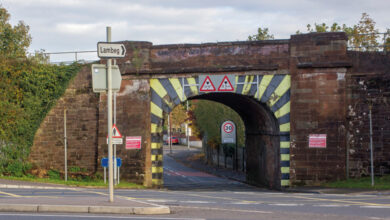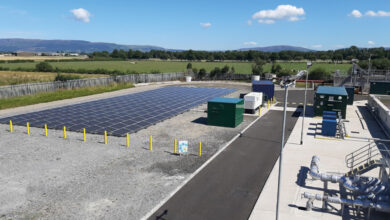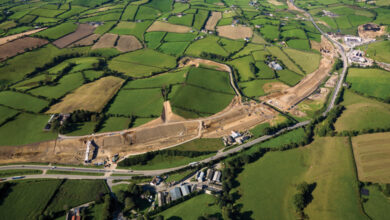Investing in future infrastructure
 Recent advancements in our infrastructure are minimal when compared to the scale of the projects which lie ahead. Even using a model designed to keep down the cost of capital, there is a clear unwillingness to open the public purse for vital infrastructure, says Dieter Helm.
Recent advancements in our infrastructure are minimal when compared to the scale of the projects which lie ahead. Even using a model designed to keep down the cost of capital, there is a clear unwillingness to open the public purse for vital infrastructure, says Dieter Helm.
The Oxford University professor estimates a potential bill of around half a trillion pounds in necessary infrastructure investment in the UK alone, while he knows of no infrastructure system which does not currently require an enormous revamp and large scale investment. Speaking about the problems facing infrastructure he points out that aside from the requirements of conventional infrastructure such as de-carbonisation of the electricity system, upgrading the transport system to take greater loads and swap to a more electricity driven model, as well as upgrading the water and sewage system, there is also the looming problem of a growing population.
“The population of the UK is projected to go up by 10 million people in the next 20 years. All of those people need fresh water supplies, all of those have run off and other issues,” he said. Then we have communications. Broadband as a universal service is a new infrastructure but already the focus should be on delivering high speed internet for everybody to enable our digital economy to function. Parochial arguments about whether open reach or broadband should be left inside a company like BT really miss the point of the scale of what is required. It’s extraordinary to think that it can be left in the hands of a small number of dominant incumbents. Our whole economies are being transformed around us, as is the infrastructure which serves these economies. Think 3D printing, think robots, think Artificial Intelligence. It’s all digital, it’s all electric and it all needs extremely secure, extremely reliable and low carbon energy infrastructure to back it up.”
Helm said that the scale of the whole package of projects needed does not match up with the scope and ability of the consumer/tax-payer to pay for it. The ability to advance infrastructure cheaply, but well, is key and at the heart of that is the cost of capital. “Everything else is for the birds in comparison”, he added.
“In the UK we have a very helpful platform which we have invented, not by some deliberate design but by accident of experience, in our utility regulatory framework. The framework provides the basis for thinking about how to contract for infrastructure and how to set in place the long term arrangements. That’s all about the Regulatory Asset Base (RAB) timing consistency and the ways in which our different kinds of projects can reflect these types of contractual deals and how they all bear down on the cost of capital.
“The issue is how to ensure that the risks of the projects are properly allocated to those people who are best able to manage them. It’s no good asking the private sector to manage regulatory and political risk in a game of trying to get it off the government’s accounts. That risk has to be public. It is no good saying to investors you sink all the fixed and sunk costs into your investment but by the way when you’re finished we might screw you down to marginal cost and of course you’ll carry on producing as long as you cover your marginal cost to make some contribution of fixed cost. That’s the time inconsistency problem.
“In the 20th Century we failed. These industries were nationalised and investments were carried out by the government because it couldn’t guarantee the private sector that it would honour these contracts. So the essence of a solution to our investment problems is to solve the time inconsistency problem and allocate the regulatory and political risk to government leaving the private sector to take the project risk and to run these assets in an efficient fashion. That can be done through RAB.”
At its basic level RAB gives an effective guarantee that a company’s investment will be recovered through consumers and makes investing in regulated utility companies low risk. RABs can be financed at low cost of debt, at some point below the cost of government borrowing and radically reduce the cost of capital. Drawing comparisons, Helm pointed to the Hinkley nuclear power station, which was done outside the framework with a capital cost of 10 per cent for the next 35 years, saying that he believes the price would have been halved had the cost of capital been similar to that of the Thames Tideway project, where the use of RAB secured a cost of capital at three per cent.
However, Helm admits that even through the use of RAB, the level of funding needed from customers to make room for the levels of infrastructure needed would require a reduction in people’s standard of living.
“These hundreds of billions required have in the end to be paid for by tax payers or customers. Of course get the cost of capital down, use the RAB type structures to reduce that as much as possible but we still have the reality that it has to be paid for by you and me. We are living way beyond our means, we’re consuming our infrastructure but we’re not fixing pot holes in the roads, setting aside decent transport assets for our next generation or providing the scales of investment for a lower carbon world,” he said.
“Following the Second World War the marginal tax rate was 98 per cent. The State took money from consumption and channelled it into investment but the modern government aren’t channelling that level of investment. Using the right models infrastructure can be done cheaply and effectively, however, without a will to pay for it we are only pretending that it is going to be delivered.”
Some of the future potential investment costs in the UK
- Hinkley nuclear power plant £25 billion
- Other nuclear infrastructure £20 billion
- Renewables £50 billion
- Energy infrastructure £20 billion
- Smart meters £12 billion
- High Speed 2 £55 billion
- Crossrail 2 £25 billion
- Roads £30 billion
- One million new houses





